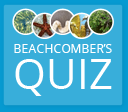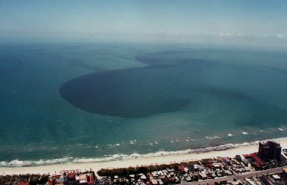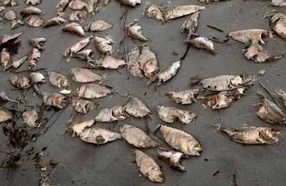- Algae are living organisms found in an aquatic environment. They obtain energy from sunlight through photosynthesis.
- Algae comprise the base of the aquatic food chain and produce 70 – 80% of Earth’s oxygen.
- Algae are found in both marine and freshwater environments, and some algae are found in moist terrestrial environments.
There are two broad categories of algae:
- Macroalgae: Large, multicellular plants. In the ocean, macroalgae is sometimes known as seaweed. In freshwater environments, we typically refer to it as algae.
- Microalgae: Single-celled photosynthetic organisms that cannot be seen without a microscope. These organisms belong to one of two Kingdoms: the Kingdom Plantae or the Kingdom Protista.
Organisms that float in the water and whose movements are subject to the movement of currents, winds, and tides are called plankton. Plankton can be divided into two broad categories:
- Zooplankton: Animal-like plankton, belonging either to the Kingdom Animalia or the Kingdom Protista. These organisms are heterotrophs, obtaining energy through the consumption of plants (phytoplankton) or other zooplankton. Zooplankton are NOT microalgae, because they do not obtain energy through photosynthesis.
- Phytoplankton: Plant-like plankton, belonging to the Kingdom Plantae or the Kingdom Protista. These organisms are autotrophs, obtaining energy through photosynthesis. Phytoplankton are microalgae.
- When water conditions are favorable, a population of algae in an aquatic system will increase rapidly, leading to an accumulation of algae. This is called an algal bloom.
- Although these blooms occur naturally in marine environments, nutrient enrichment caused by human activity can increase the population density and duration of a bloom.
- We will focus of Florida Red Tide as a Harmful Algal Bloom case study.
Florida Red Tide
- The most common harmful algal bloom (HAB) in our region is the Florida Red Tide. The Florida Red Tide is caused by a large accumulation of the microalgae Karenia brevis.
- Karenia brevis is a solitary dinoflagellate that releases toxins called brevetoxins, which are poisonous to vertebrate animals.
- Brevetoxins are proteins found in Karenia brevis cells. Their exact function in these toxins is unclear, but they are released when algal cells break apart at death.
- High concentrations of brevetoxins cause fish kills, in which fish populations experience mass mortality. Red Tide enduced fish kills affect a variety of species. As the bloom progresses, the toxins accumulate in the bodies of animals at increasingly higher trophic (food web) levels. Animals at lower trophic levels accumulate the toxins first, and those that do not die are eaten in large quantities by their predators, who may die or may, in turn, be eaten in even larger quantities by their predators. As a result, animals at the lower end of food webs die first, followed by predatory species.
- Predators like dolphins, osprey, eagles, and pelicans can be killed by brevetoxins when they eat fish that have been exposed to HABs.
- When manatees graze during a red tide bloom, they accidentally consume small animals attached to the seagrasses. These animals are typically filter feeders that accumulate high levels of brevetoxins. Manatees feeding in affected areas can be killed after ingesting these invertebrates.
- Brevetoxins are extremely small proteins, and can be easily aerosolized (made airborn). When present in high concentrations, brevetoxins can enter the air at the surf line and irritate epithelial throat cells in humans, causing a shallow cough and possibly triggering asthma attacks.
- When people eat shellfish that have been exposed to Florida Red Tide, they can contract a very serious and potentially deadly illness called Paralytic Shellfish Poisoning, or PSP. Another form of this ailment is Neurolytic Shellfish Poisoning, which can cause extreme neurological disorders and may lead to death. The best way to avoid these ailments is to consume only shellfish that have been harvested on state regulated shellfish beds.
- Florida Red Tide has significant economic impacts on coastal communities. Most of Florida’s economy is based on tourism, and red tide events are particularly damaging to this industry. News of red tides in an area can cause precipitous declines in the revenue generated by visitors to the state.
Review Questions
- Name the two major groups of algae. How are they different?
- What is an algal bloom? Name one factor that makes algal blooms more likely to occur.
- Why is Florida Red Tide considered a Harmful Algal Boom?
- What is a fish kill?
- List at least three negative effects of Florida Red Tide.
Crossword Puzzle
Glossary
Algae: Any living thing found in an aquatic environment that obtains energy from sunlight through photosynthesis.
Algal Bloom: When a population of algae in an aquatic system increases rapidly, leading to an accumulation of algae.
Autotroph: Any organism that obtains energy through photosynthesis.
Brevetoxins: Toxins released by Karenia Brevis that are poisonous to vertebrate animals.
Fish Kill: An event in which large numbers of fish are killed by brevetoxins.
Florida Red Tide: A harmful algal bloom that is the result of an accumulation of the microalgae Karenia Brevis.
Harmful Algal Bloom (HAB): An algal bloom that has negative impacts.
Heterotroph: Any organism that obtains energy through the consumption of plants or other animals.
Karenia brevis: The microalgae responsible for Florida Red Tide; releases brevitoxins
Macroalgae: Large, multicellular marine plants.
Microalgae: Single-celled photosynthetic marine organisms that cannot be seen without a microscope.
Neurolytic Shellfish Poisoning: A severe form of Paralytic Shellfish Poisoning that can cause extreme neurological disorders and death.
Nutrient Enrichment: The addition of more nutrients to a body of water than its inhabitants require for normal life, growth, and reproduction.
Paralytic Shellfish Poisoning (PSP): A serious and potentially deadly illness caused by the consumption of shellfish that have been exposed to Florida Red Tide.
Phytoplankton: Plant-like plankton.
Plankton: Microscopic organisms that live in water.
Zooplankton: Animal-like plankton.





